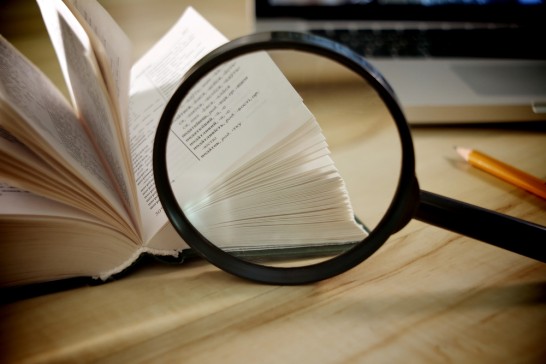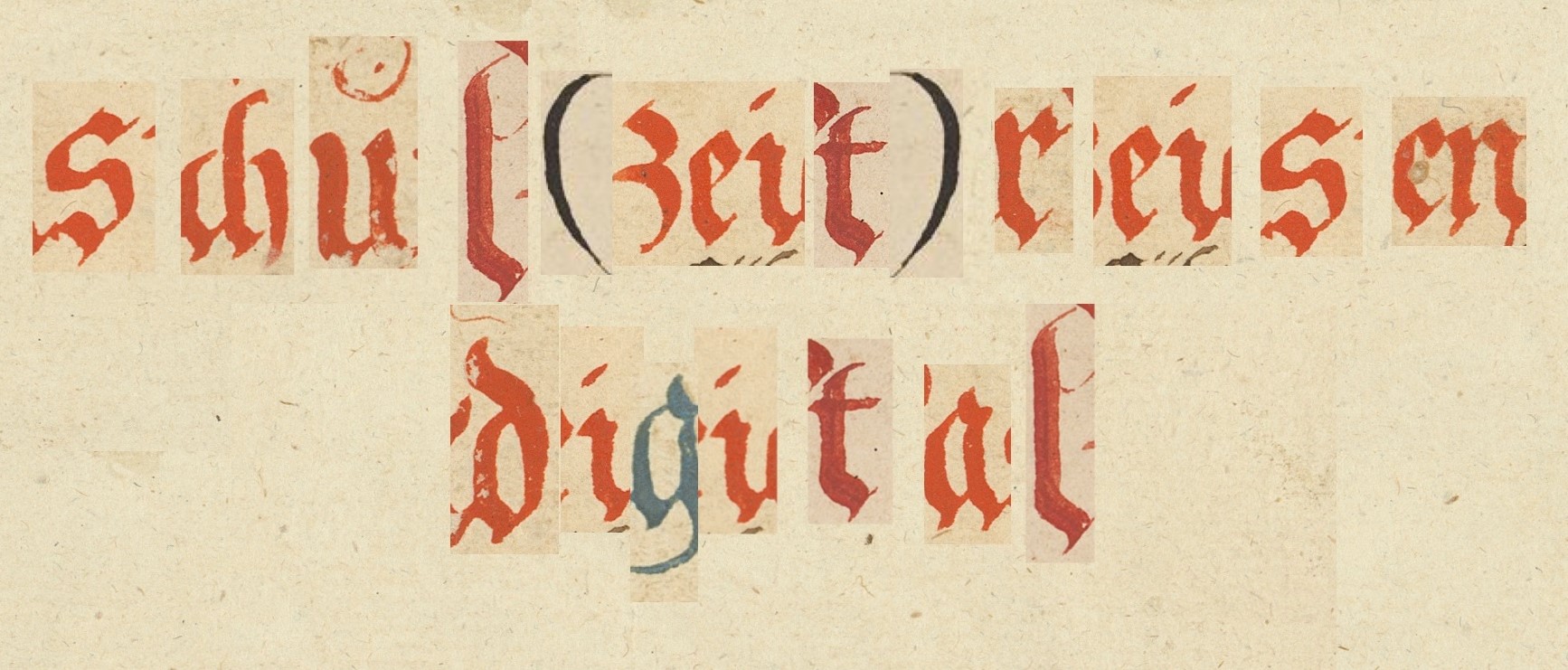
Adventures in time for schools
using documents from the holdings of the Zentralbibliothek Zürich:
an offering for secondary school teachers
We offer study material to supplement or enhance lessons free of charge. The focus is on the history and cultural history of Zurich, but other subjects such as German and Latin are also covered. The learning units each focus on original documents from the Zentralbibliothek Zürich and its special collections. These are thematically framed, explained and supplemented with further reading references for teachers. The material is available as PDF documents. The original documents presented are always available online.
The ‘Adventures in time for schools’ are part of the Zentralbibliothek Zürich’s strategic focus on Citizen Science.
Feedback
We are always happy to receive feedback from you, the teachers: Do you have any suggestions, criticism or questions? Would you like to request a special topic? Or could you imagine developing a thematic unit yourself?
Please get in touch with us:
Chris Bünter
Stay up to date
If you would like to stay up to date with regular information about new content, add yourself to our mailing list:
Wellness in the 19th century

An illustrated manuscript from 1815 provides an in-depth look into the bath culture of the 18th and 19th centuries and thus into the prehistory of today's wellness programs.
Keywords
Badenfahrt - David Hess - City of Baden - Kurbäder - Tourism in the 19th century - Hotel business - Hygiene - 19th century - Personal hygiene
Ittinger monastery attack of 1524

In this individual account of the Ittingen monastery attack of 1524, we are guided through the events by means of pictures and texts from a chronicle of the time.
Keywords
Iconoclasm - Reformation - Ittinger monastery attack 1524 - Heinrich Bullinger - 16th century - Heinrich Thomann - Zurich church and reformation history
Fish in the waters of Zurich around 1700

A copperplate engraving from the early 18th century depicts the fish species of Lake Zurich and the Limmat that lived in these waters at the time. The table below shows the protection periods for catching and selling fish.
Keywords
Lake Zurich - Fish species - Freshwater fish - Animal welfare - Fishing - Johann Simmler - Johann Melchior Füssli - 18th century - People and the environment
The misused Tell?

The letterhead of the Helvetic Republic shows the freedom hero William Tell and other symbols of freedom and equality. A selection of such vignettes is presented here.
Keywords
Swiss history - 18th century - Helvetic era - Helvetic republic - Image viewing - William Tell - French Revolution - Johann Caspar Lavater
Of men and wolves – Zizers in winter 1571

Through a 16th-century account of a wolf attack on three young women, students learn about the relationship between humans and animals in times gone by.
Keywords
Wolves – Relationship between man and animal – Wickiana – Johann Jakob Wick – Zizers – 16th century
A European view of the world

The magnificent atlases of the 16th and 17th centuries evince a Eurocentric view of the world and of people and resources, which is reflected in elements such as the rich decoration of the maps. Students use examples to hone their skills in image analysis and source comparison. They practise deciphering representations of power and stereotypes relating to their ‘own people’ and ‘foreigners’, and classifying them historically.
Keywords
17th century – Magnificent Dutch atlases – Maps – European expansion – Ottoman Empire – Turkish wars – Depictions of people – Worldview – Image analysis – Decoding – Stereotypes of ‘own people’ and ‘foreigners’
‘Der Bomben Gwalt’ – Insights into the craft of war in the 18th century

Gain insights into the historical understanding of the construction and use of weapons - Learn about the history of the Feuerwerker-Gesellschaft - Explore the Neujahrsblätter from a military-historical perspective - Undertake a critical reflection on the use of weapons for the purpose of war
Keywords
Zurich in the 18th century – Gesellschaft der Constaffler und Feuerwerker – Neujahrsblätter – Weapons – Military affairs – Warfare
The Bern iconoclasm of 1528

This detailed drawing of the iconoclasm in Bern Minster in 1528 guides students towards nuanced questions on the handling of sacred cultural assets during the Reformation.
Keywords
Iconoclasm – Reformation – Bern 1528 – Heinrich Bullinger – 16th century – Heinrich Thomann – Bern Minster – Zurich church and Reformation history
Travel in the 17th century – Johann Heinrich Waser’s ‘Itinerarium Italiae, Belgi, Angliae, Germaniae, Bohemiae et Helvetiae’
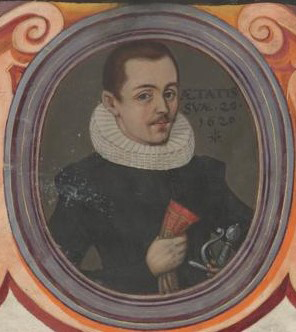
Discover the life and times of a wealthy citizen of Zurich in the 17th century. Find out what a ‘Grand Tour’ was and which destinations it included. Expand your knowledge of geography and cultural history using historic documents as examples. Develop a better understanding of travelogues and ‘tourism’ in the early modern period.
Keywords
Zurich bourgeoisie – 17th century – Grand Tour – early modern period – travel in the 17th century – tourism
Dissolution of monasteries
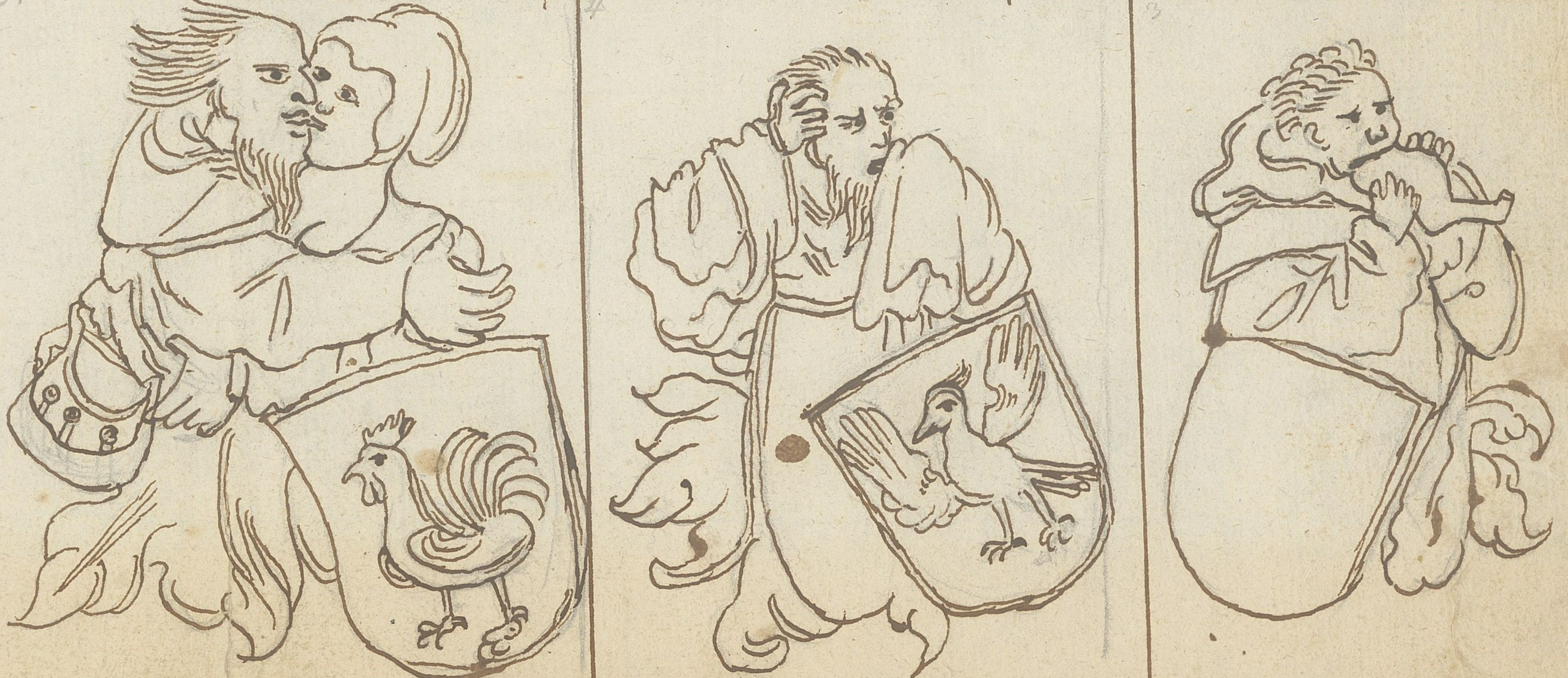
The Reformation is one of the biggest events in Swiss history. The dissolution of monasteries was just one element of these developments. But it reveals important aspects of the Reformation, such as criticism of the clergy’s way of life, the desire for church reform and the role of the community. Students learn from caricatures that images can convey a message. They learn that the illustrators may have their own agendas.
Keywords
Reformation – dissolution of monasteries – secularisation – Roman Catholic church – indulgences
A 14th-century nun’s testimony of faith
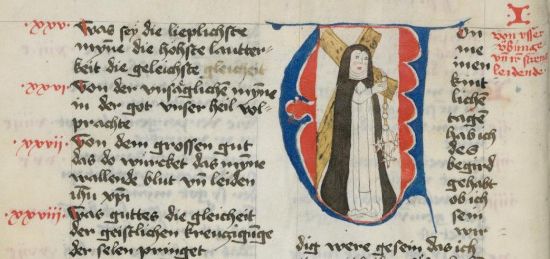
Elsbeth von Oye was a noble nun in Zurich’s Oetenbach abbey. Her handwritten records offer an insight into the practice of faith in the Middle Ages and her quest for God.
Keywords
Religion – Christianity – Elsbeth von Oye – the experience of God in the Middle Ages – asceticism – Oetenbach Abbey – Zurich
The ‘Frontenfrühling’ fascist surge in Zurich (1933)
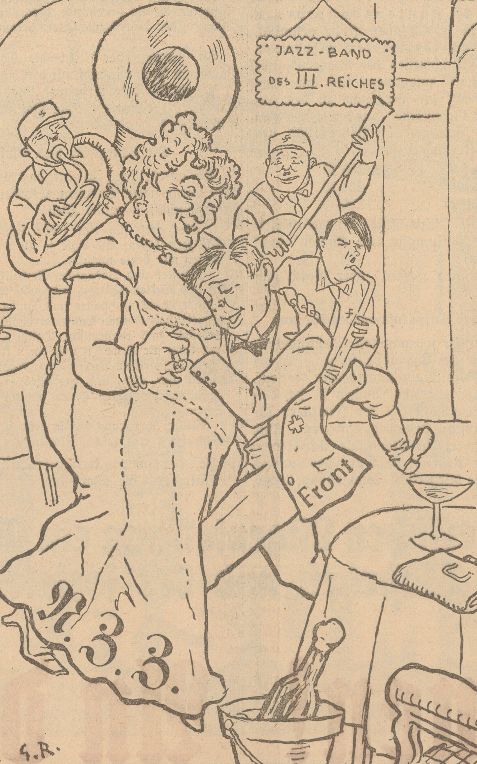
Parties from the extreme right-wing National Front movement stood with bourgeois parties in the Zurich city elections in September 1933. These first elections for the government and parliament of the Greater Zurich area, then newly created by the second incorporation, represented the high watermark of what was known as the ‘Frontenfrühling’ (fascist surge).
Students develop an awareness of how Swiss democracy was also under threat from the right wing in the 1930s.
Keywords
‘Frontenfrühling’ fascist surge – Zurich municipal council elections (1933) – Zurich city council elections (1933) – Second incorporation (Zurich)
Russian troops in Zurich (1799)
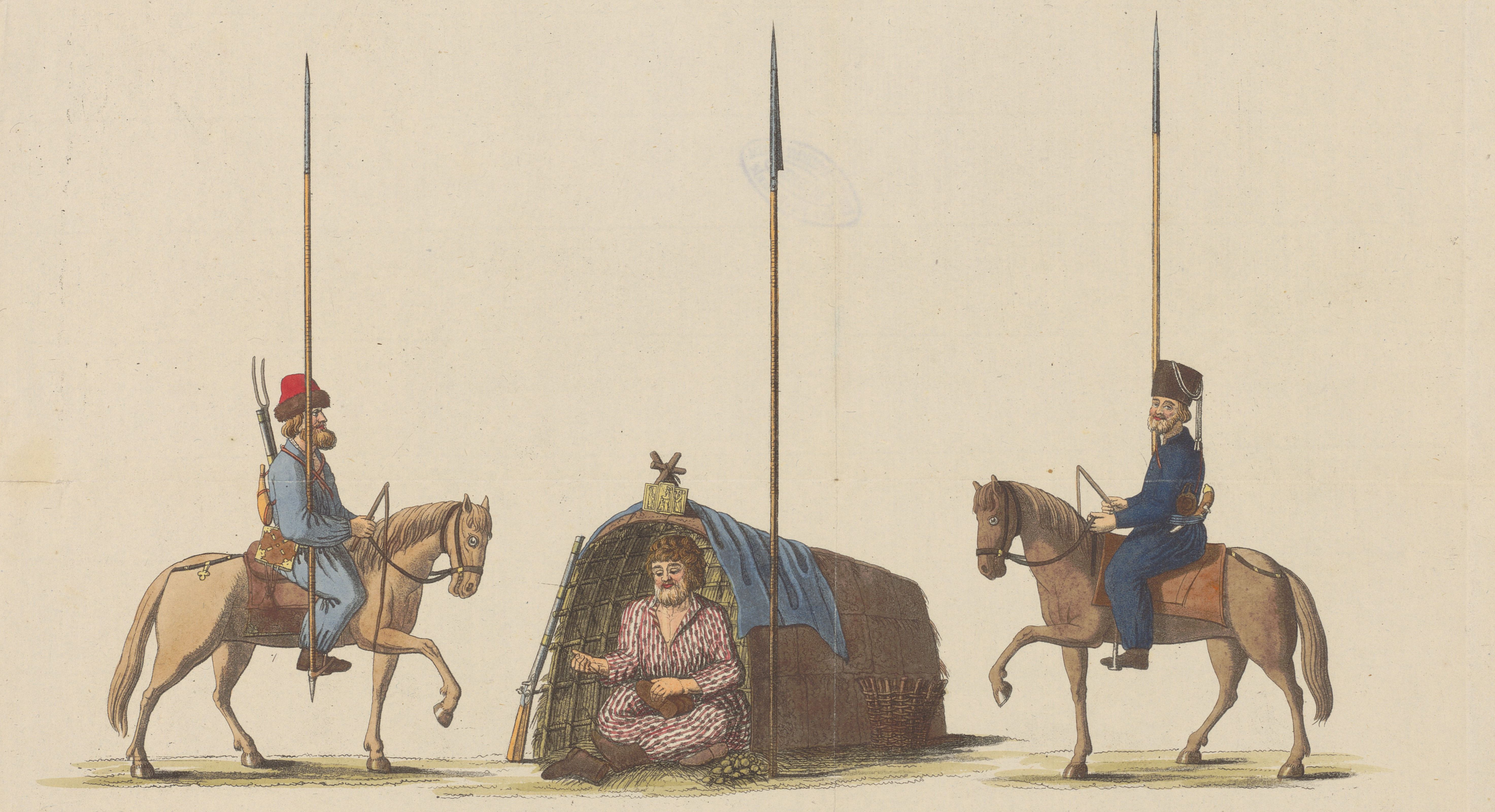
In 1799, as part of the coalition against revolutionary France, Russian soldiers found themselves on what is now Swiss territory. How did Zurich’s population react and how did they perceive the occupying forces?
Students develop an awareness of how the description of the outsider is shaped by the person who observes them. This is particularly true when linguistic differences make understanding impossible.
Keywords
War of the Second Coalition (1799–1801) – First Battle of Zurich 1799 – Second Battle of Zurich 1799 – General Alexander Korsakov (Aleksandr Korsakov, 1753–1840) – Russian troops – Perception – Russian dictionary
A recipe for the good life

Using a recipe book, we find out a little more about everyday life in a bourgeois household circa 1750. We learn about eating habits, details of body and pet care, and medical treatment at the time.
Keywords
Cookbook – everyday life in the 18th century – hygiene – eating habits – medical history
Greek War of Independence (1821–1832) and Zurich Philhellenes
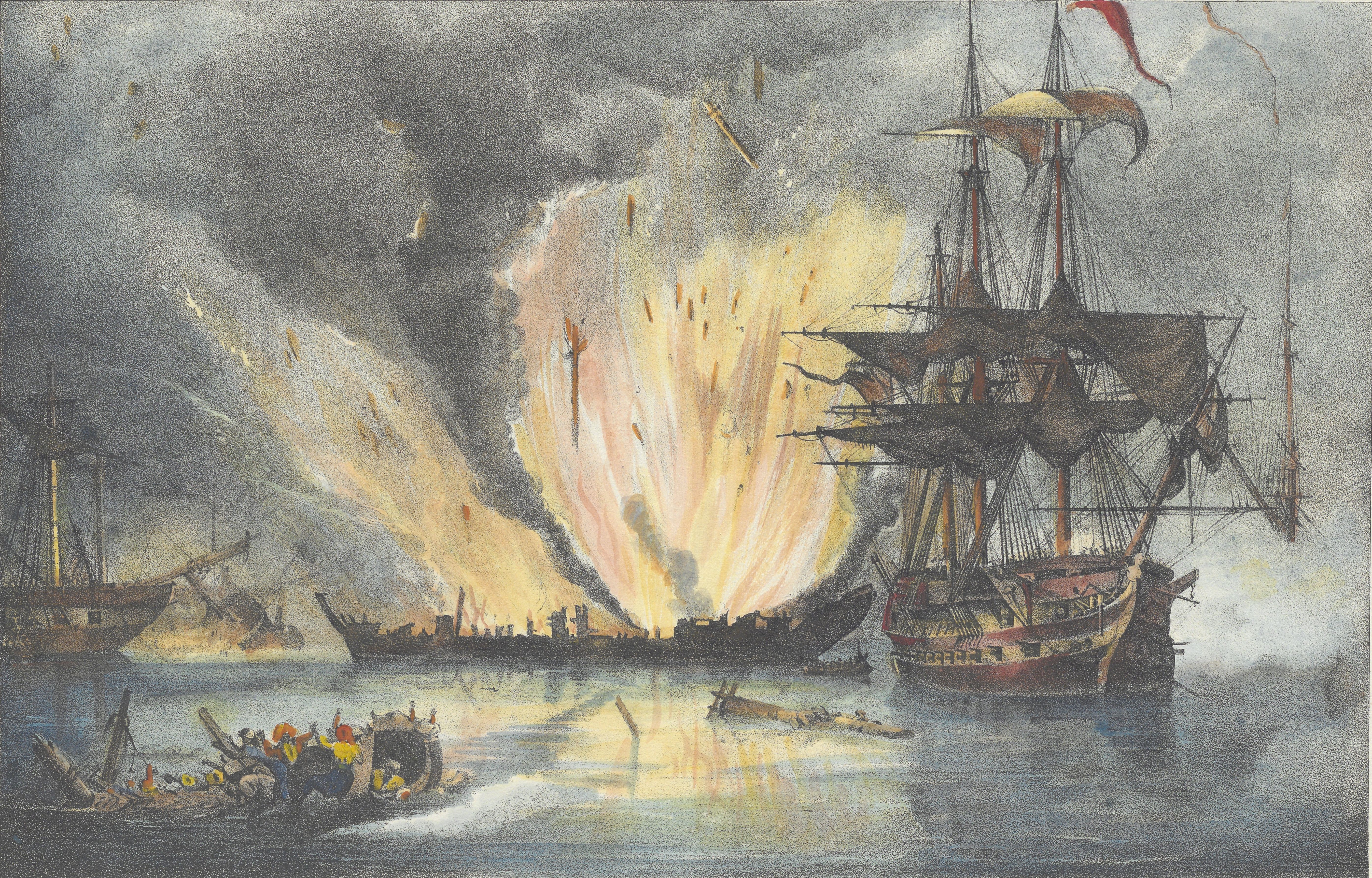
When Greeks rebelled against the Ottoman Empire in various locations, they encountered huge sympathy for their cause in the western world. The Philhellene movement subsequently emerged across Europe and as far away as North America, and sought to support the Greeks in their fight for independence.
Students gain an insight into the emergence of modern Greece and learn about the links between local political events and European cultural history.
Keywords
Greece – War of Independence – Greek Revolution – Philhellenism – Johann Caspar von Orelli – media event
Industrialisation and child labour in the canton of Zurich
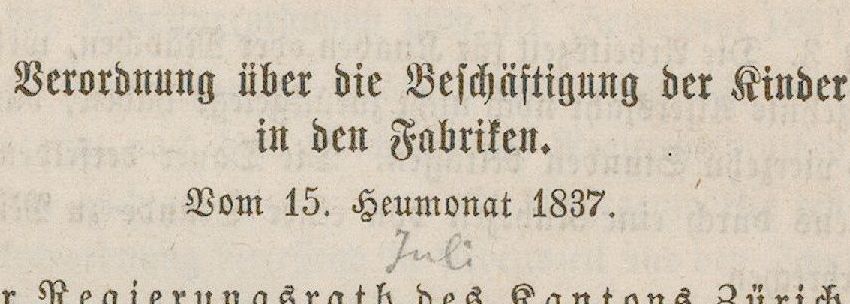
Students tackle the subject of industrialisation and its effects using the example of child labour in Zurich factories. They learn to understand, evaluate and contextualise source texts.
Keywords
Industrialisation – factory work – child labour – manufacturing legislation – social issue
An early vaccination drive
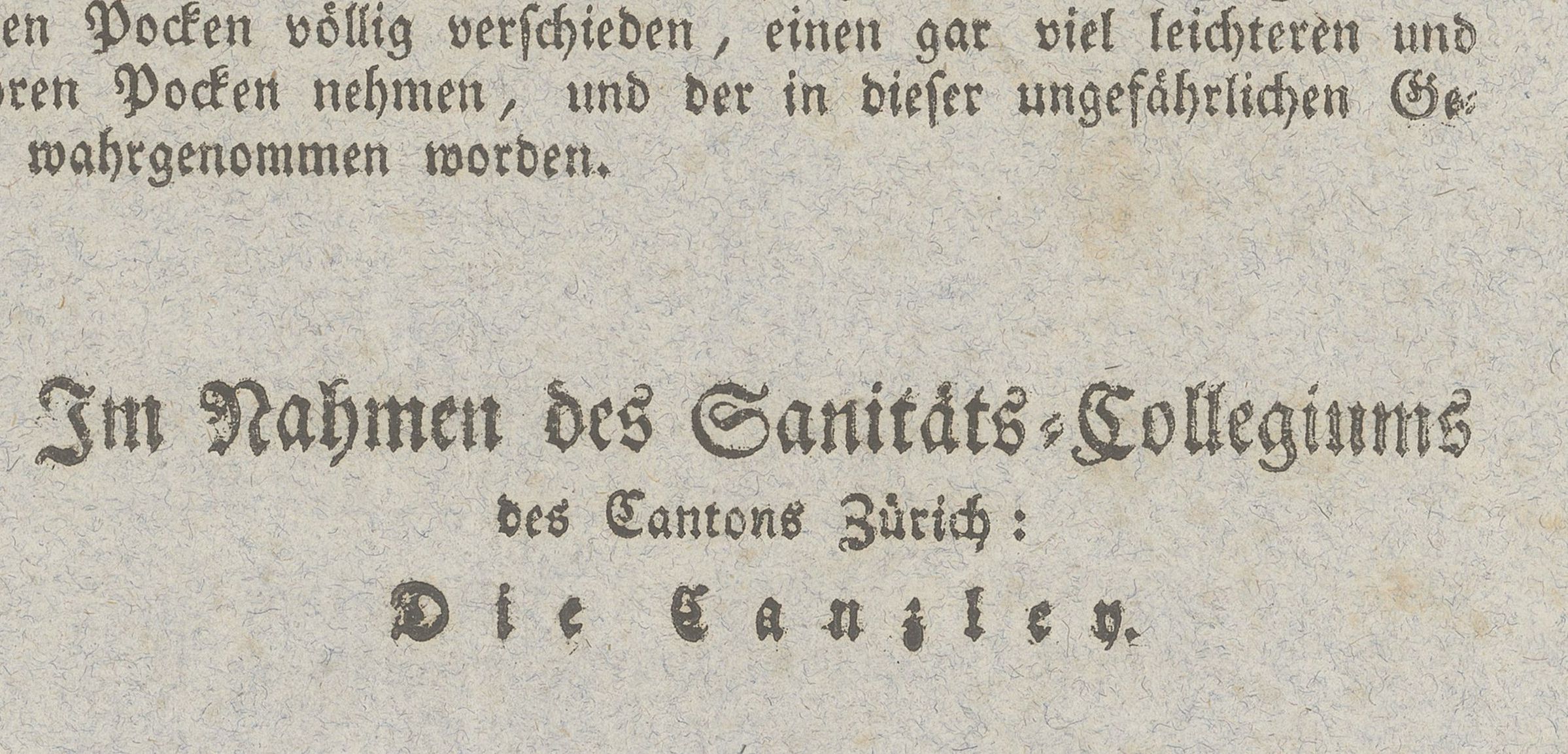
Which arguments did Zurich’s government use to convince the population to get vaccinated against smallpox in 1825? Which parallels and differences between current and past events can be found in historic documents?
Keywords
Vaccination – smallpox – canton of Zurich – epidemic prevention – medicine – 19th century
The Collegium Insulanum – an Early Enlightenment society in Zurich
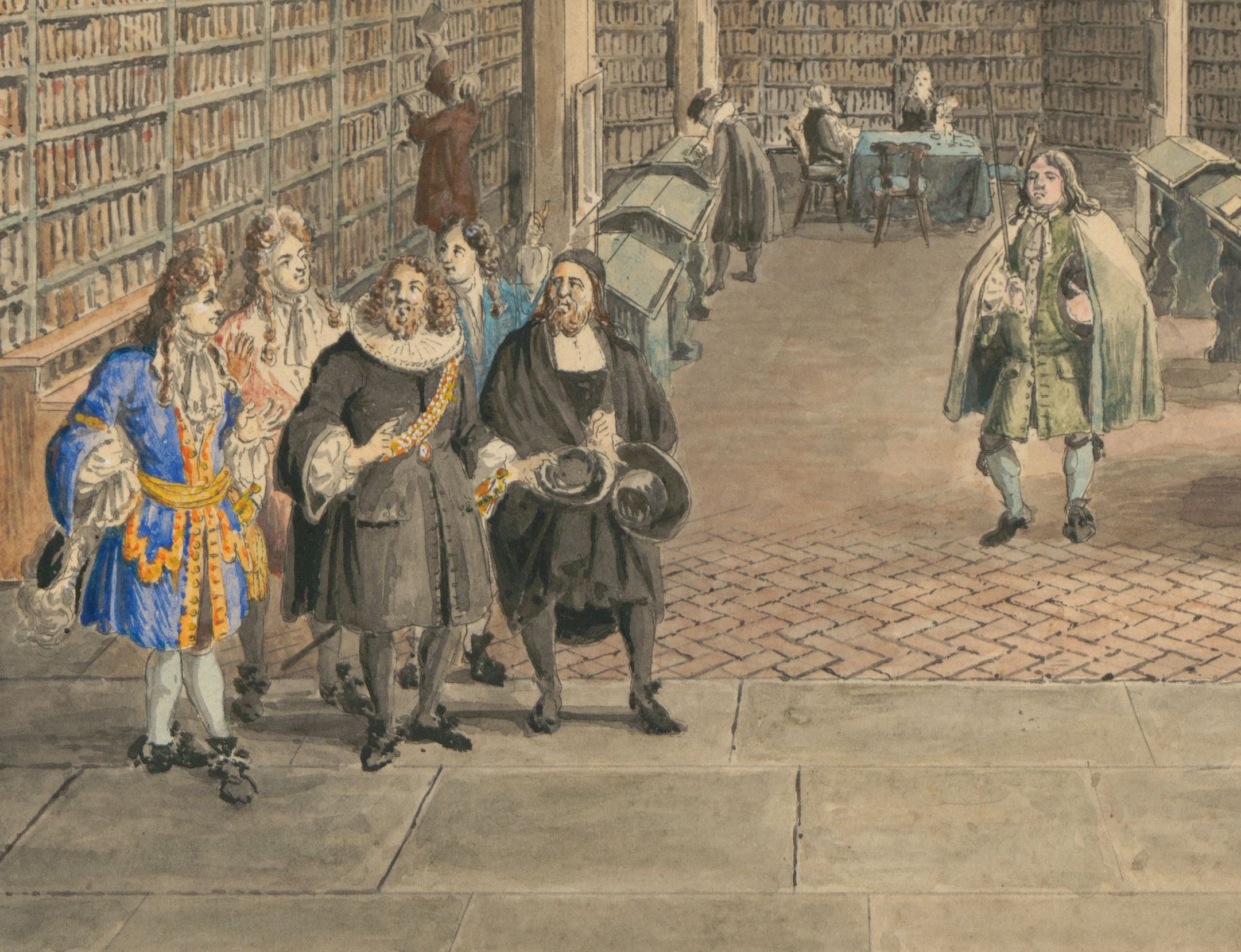
The late 17th century in Zurich saw the foundation of the Collegium Insulanum, one of the first Enlightenment societies. Its twelve members – all educated and respected men from Zurich – met in the city library in the Wasserkirche church. The Early Enlightenment period is explained through the members of the society and the city library as a site of knowledge.
Keywords
Early Enlightenment – Enlightenment society – city of Zurich – Collegium Insulanum – 1679–1709 – History of education
Schweizer Kleinmeister – comparing images
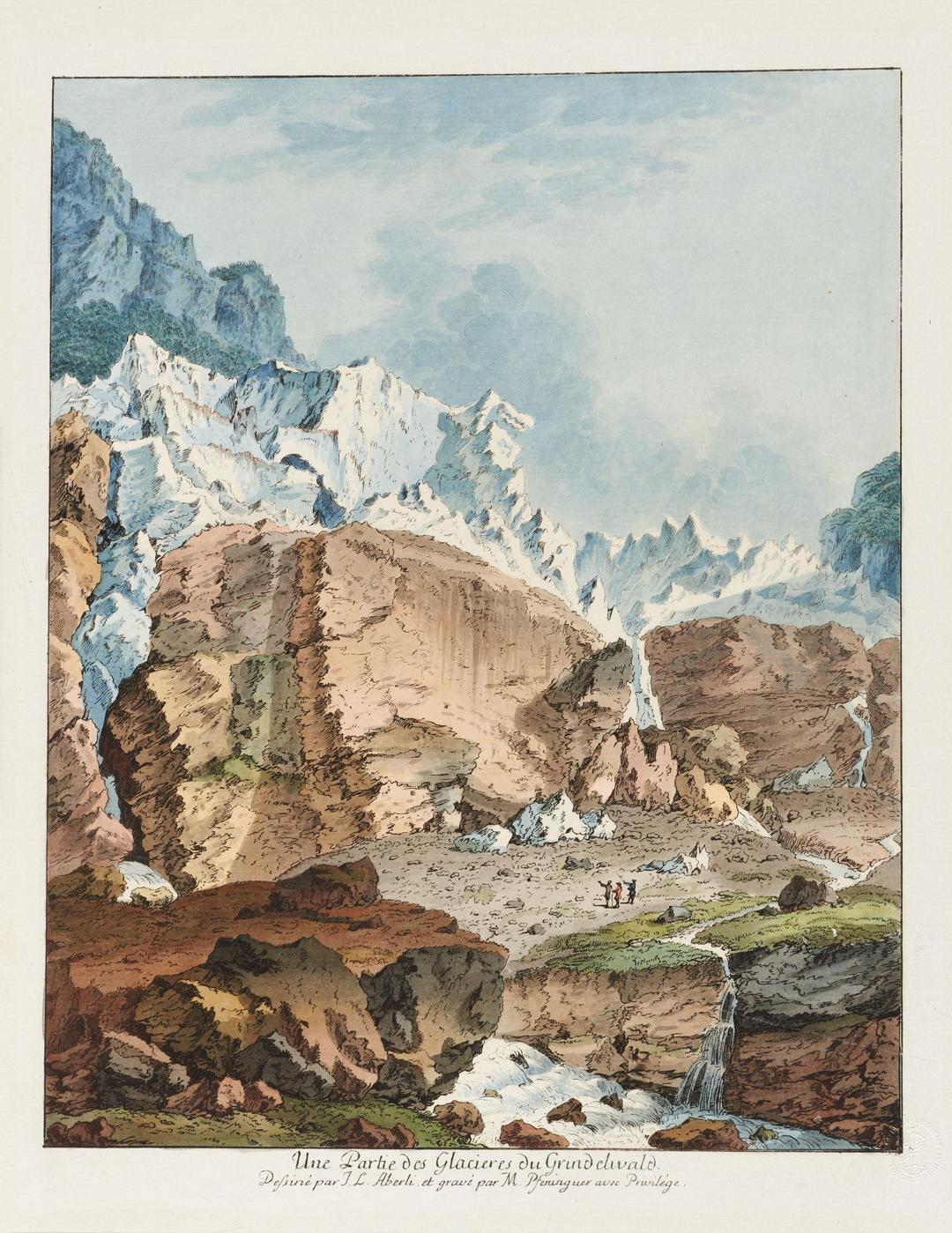
When we conjure up images of idyllic Swiss landscapes, more often than not we are visualising motifs popularised in the 18th and 19th centuries by the Swiss “Kleinmeister”, or minor masters. We compare three versions of one such image that was produced in around 1768 and learn more about the circumstances and conditions of art production at the time.
Keywords
visual arts – Schweizer Kleinmeister – Swiss art history – tourism in the 18th and 19th centuries
Panoramas – zooming with pen and pencil
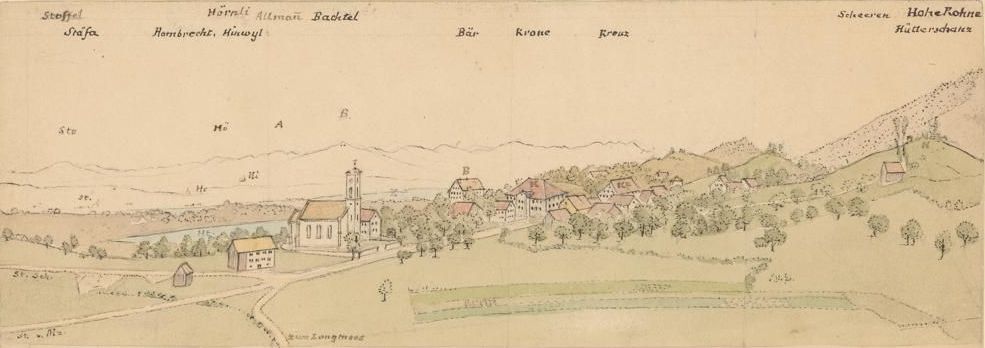
Pupils learn the art of precise observation by looking at a number of panoramas and views of a small Zurich commune in the 19th century, as preparation for trying out a panorama of their own.
Keywords
geology – Swiss art history – tourism – huts (Zurich) – panoramas – Heinrich Keller (1778–1862) – cartography – artistic practice – art teaching
A festival in the year 1698: the inauguration of Zurich’s new town hall
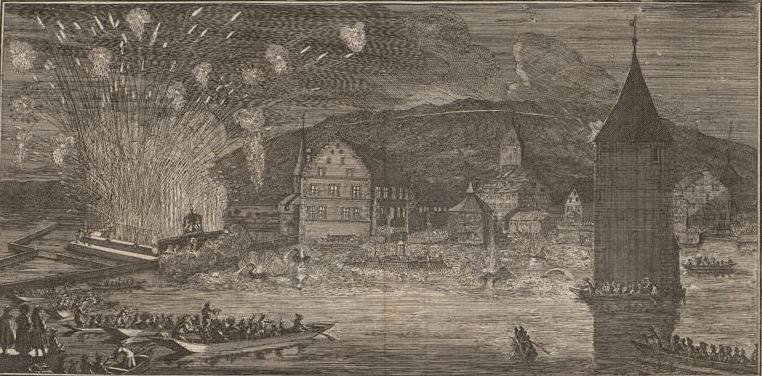
Two New Year publications by the “Constaffleren und Feuerwerker” serve to explain the importance of the new town hall for Zurich’s populace. Students learn about the city’s festival culture in the early modern era and the “Neujahrsblätter” – typical local New Year publications of great longevity – as well as the storied societies from the city’s history.
Keywords
city of Zurich history – prestige buildings of the 17th century – New Year publications – festival culture of citizenry in the early modern era – imagery and emblematics – city societies
The poet and the aliens police – Else Lasker-Schüler in Swiss exile
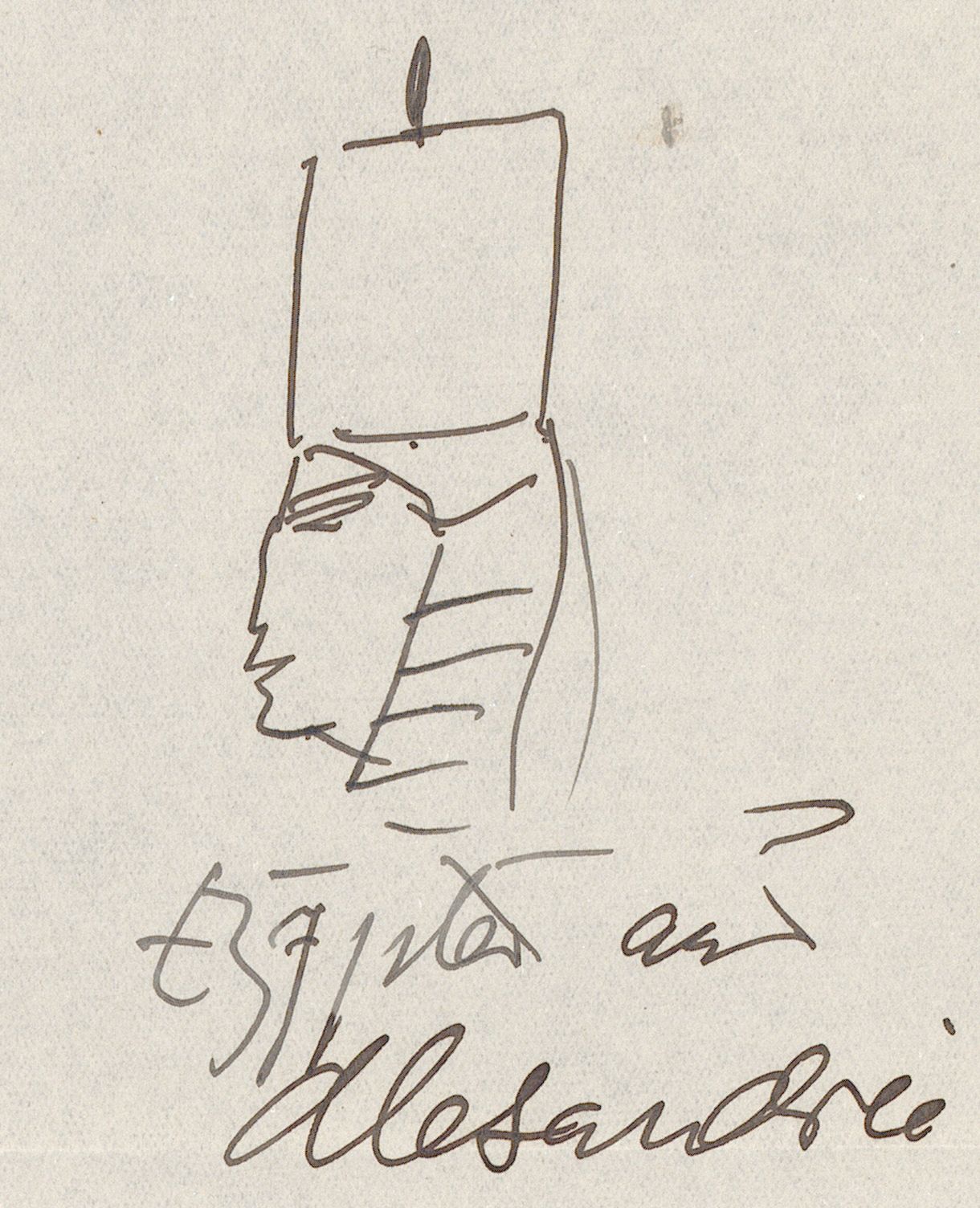
The Jewish poet Else Lasker-Schüler fled Nazi Germany for Swiss exile in 1933. Zurich’s aliens police ultimately denied her permanent residence, forcing her to move on to Palestine.
Students learn about the particular circumstances of refugees from Nazi persecution in exile in Switzerland.
Keywords
Else Lasker-Schüler – exile – Nazism– persecution of Jews – Zurich – aliens police
A foray into civics
The Greifensee region serves as an example for an in-depth look at the fortunes of a bailiwick over the more than 400 years during which it and its associated lands belonged to Zurich. We examine an early photograph and an even older plan of the castle complex and delve into a manuscript – or rather a transcript of it – on the history of the bailiwick. We learn how to compare image, plan and text and attempt to fill gaps in the information in one document using details contained in another.
1. Greifensee – a typical bailiwick
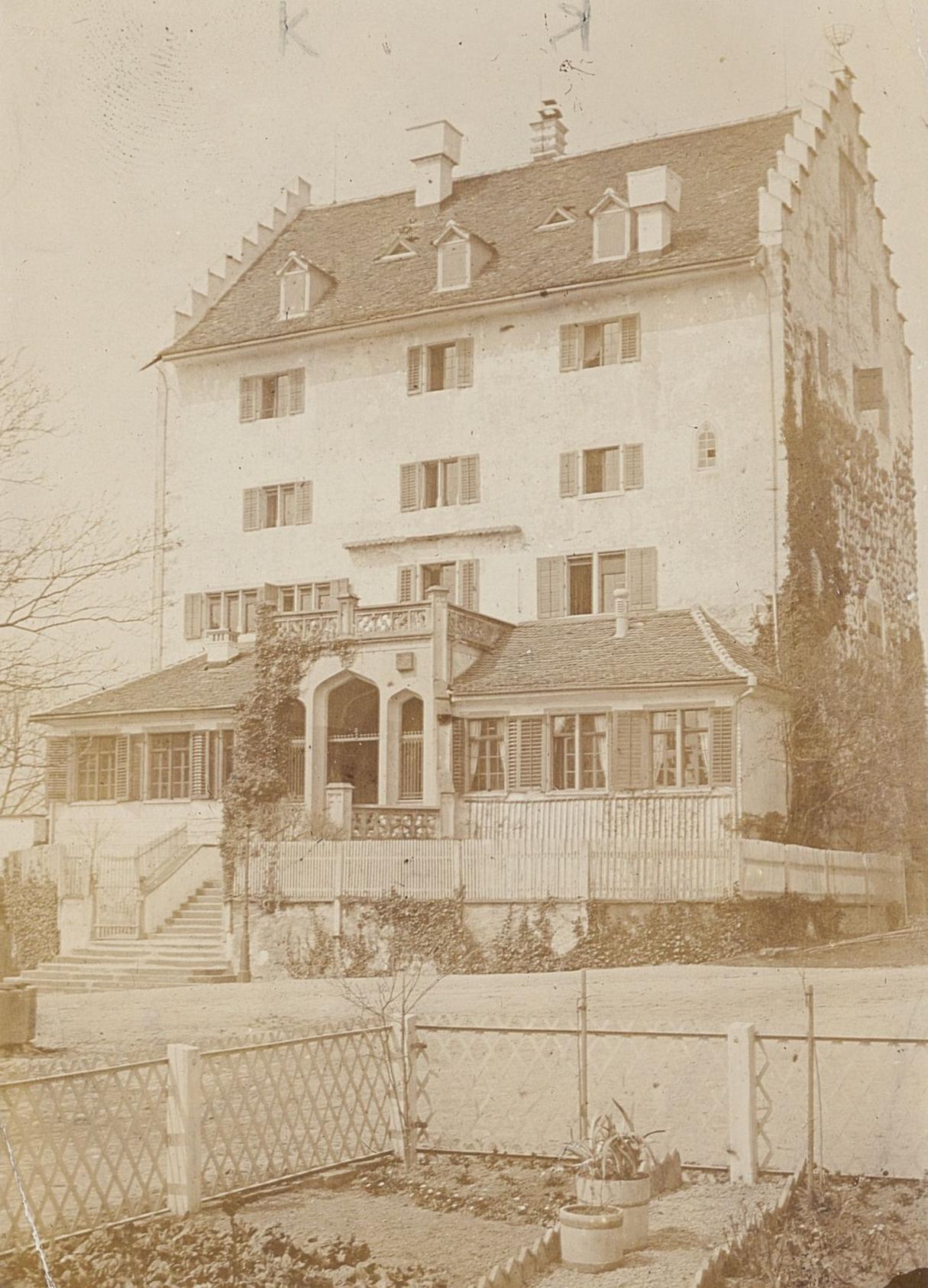
Keywords
bailiwicks – Old Confederation – civics – Canton of Zurich – Greifensee
2. Salomon Landolt – a typical bailiff
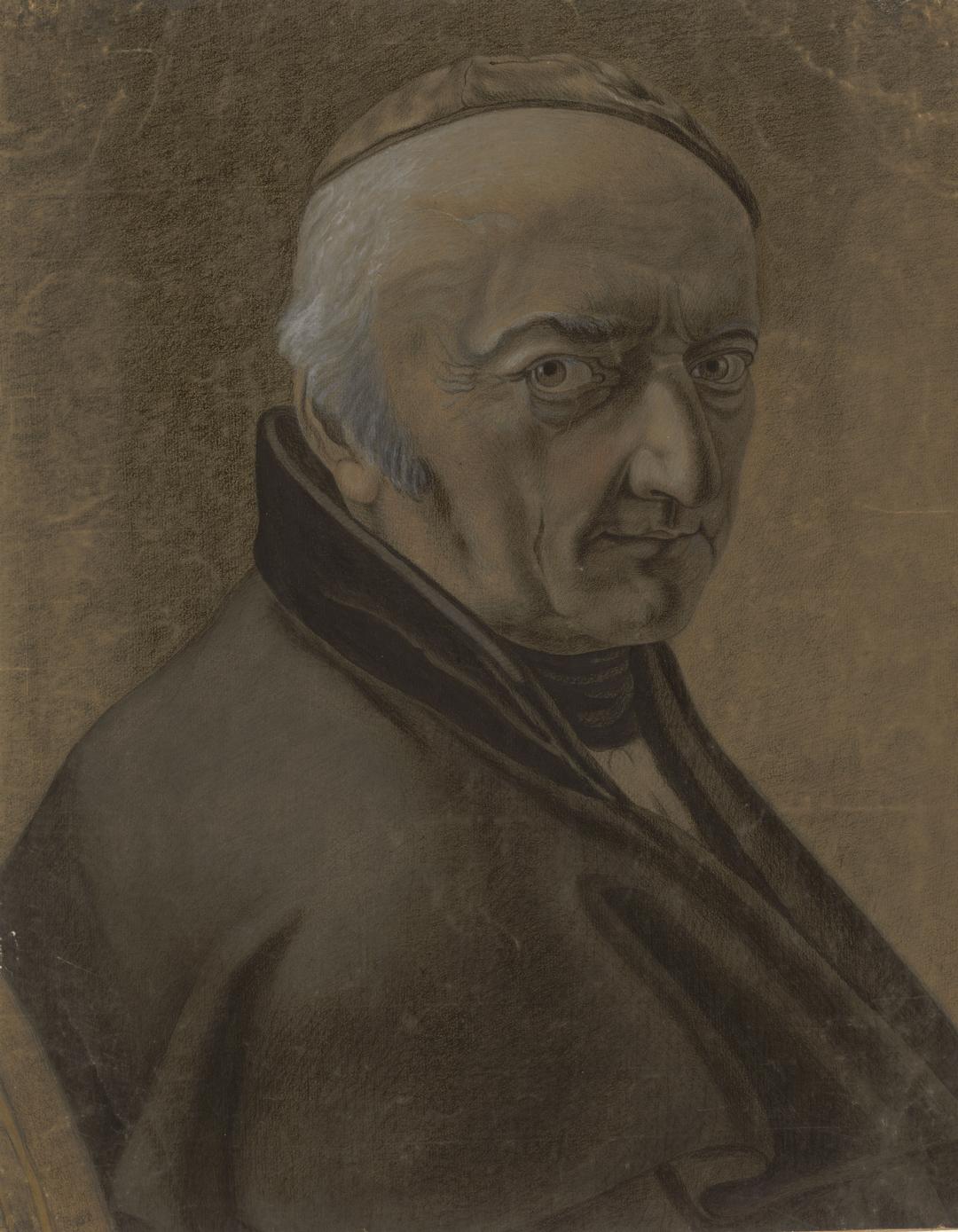
Keywords
bailiwicks – Old Confederation – civics – Canton of Zurich – Greifensee
Living through a pandemic – Zurich’s communal chronicles for the year 1918
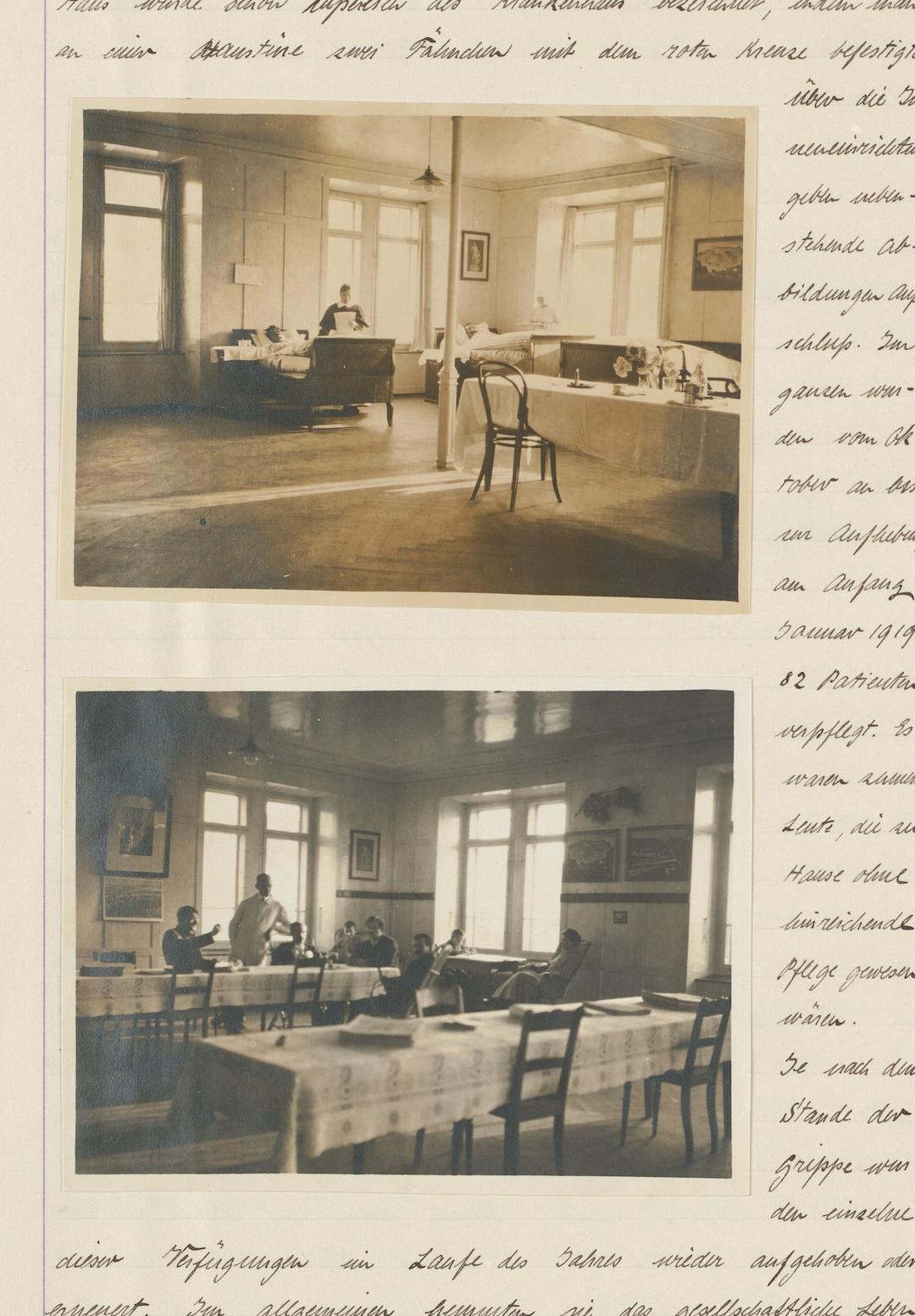
How did people 100 years ago deal with a pandemic? Zurich’s communal chronicles for the year 1918 provide some answers, in the form of records of the “Spanish flu”. These reports appear alongside others on agricultural yields, the situation in the schools, Church and associations, the end of the war and the national strike.
Students will examine two illustrations of a hospital room and describe what they see. They will read the description from Uster by way of an example and search for reports from their own commune, before identifying differences and parallels with the situation today.
Keywords
Spanish flu – pandemic – communes of Zurich – 1918 – communal chronicle – canton of Zurich
Letter-writing in the old days – when to write and how
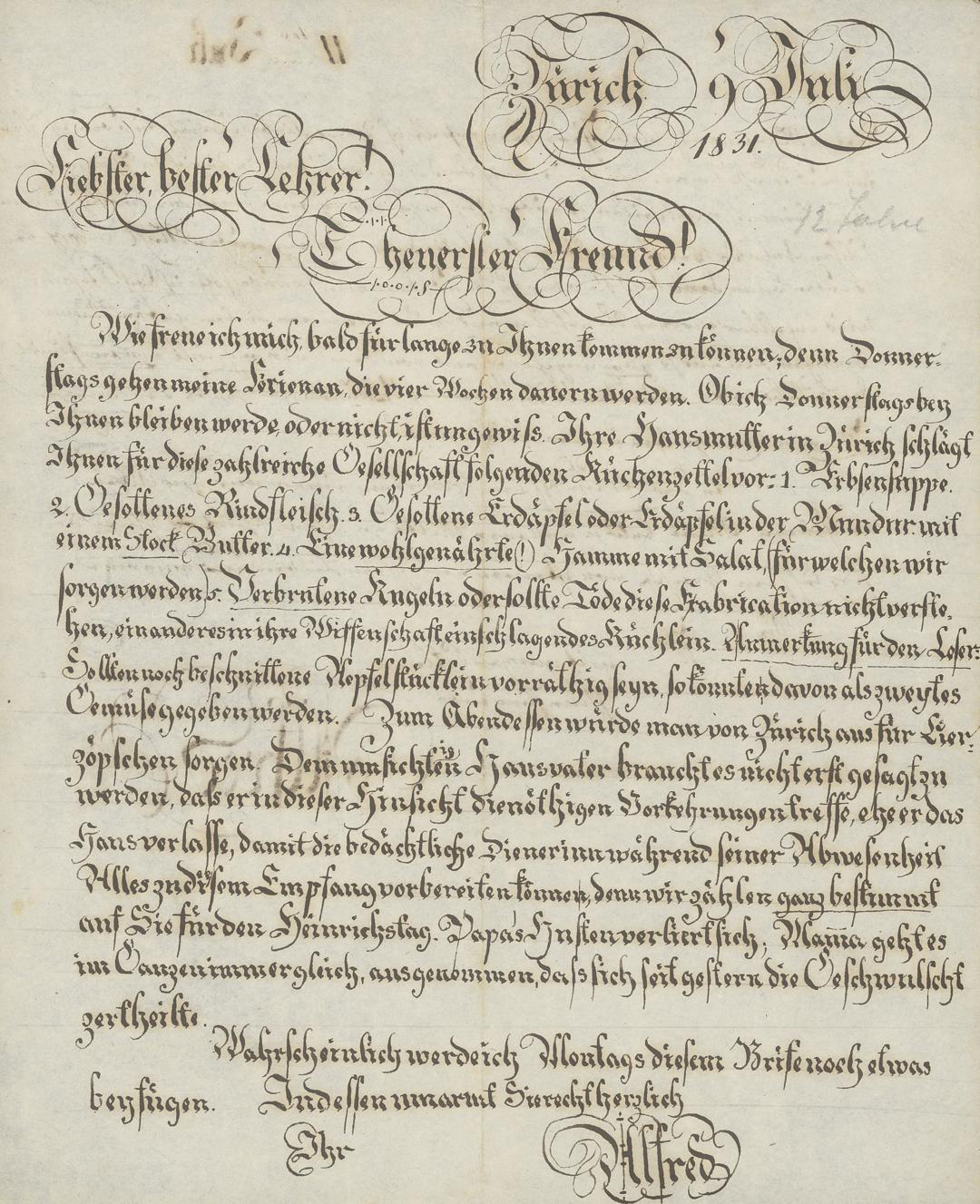
A letter written by a young person in the 19th century will introduce students to earlier conventions and raise their awareness of the cultural change in how we communicate, and their role in that change.
Alfred Escher, a prominent Zurich citizen of the age of industrialisation, is chosen as a personality to explore using further (digital) offerings from the internet.
Keywords
letter-writing in the 19th century – types of script – writing with pen and ink – calligraphy – writing style – Alfred Escher – metadata – digital edition of letters
Who’s afraid of old scripts? – reading and understanding texts in Kurrent script
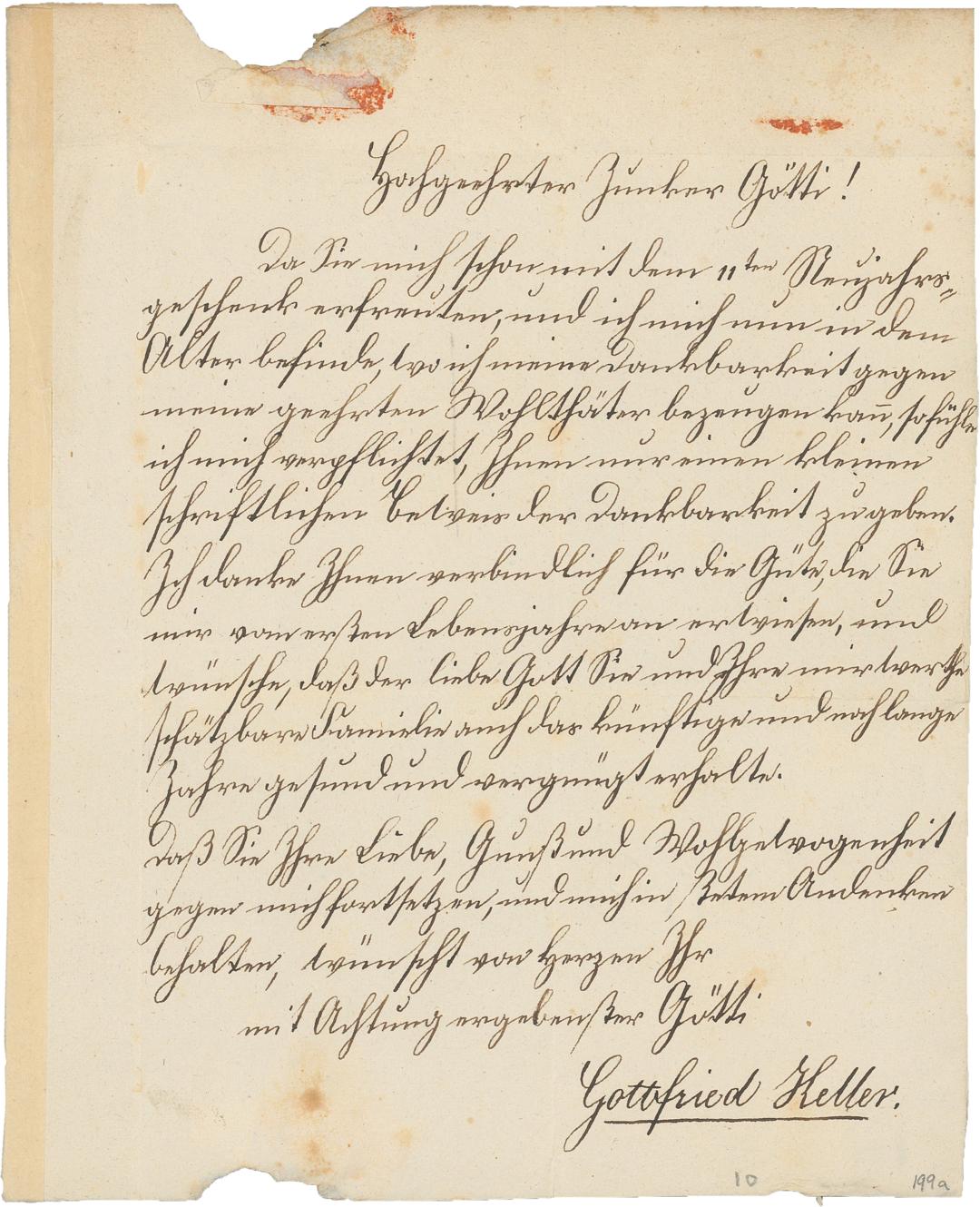
What are the difficulties involved in reading handwritten documents in the cursive “Kurrent” script – and what is it anyway? What letter forms are different from the way we write today, and what special rules apply? How can you decipher a text in difficult handwriting?
Students will explore the characteristics of the Kurrent script and learn some of the letters; they will be able to read or decipher a short piece of text written in the form of Kurrent taught in schools, and learn a method of deciphering other scripts and handwriting.
Keywords
Kurrent script – Sütterlin – Deutsche Schreibschrift – blackletter – decipher
Switzerland and the slave trade – looking for clues in individual documents
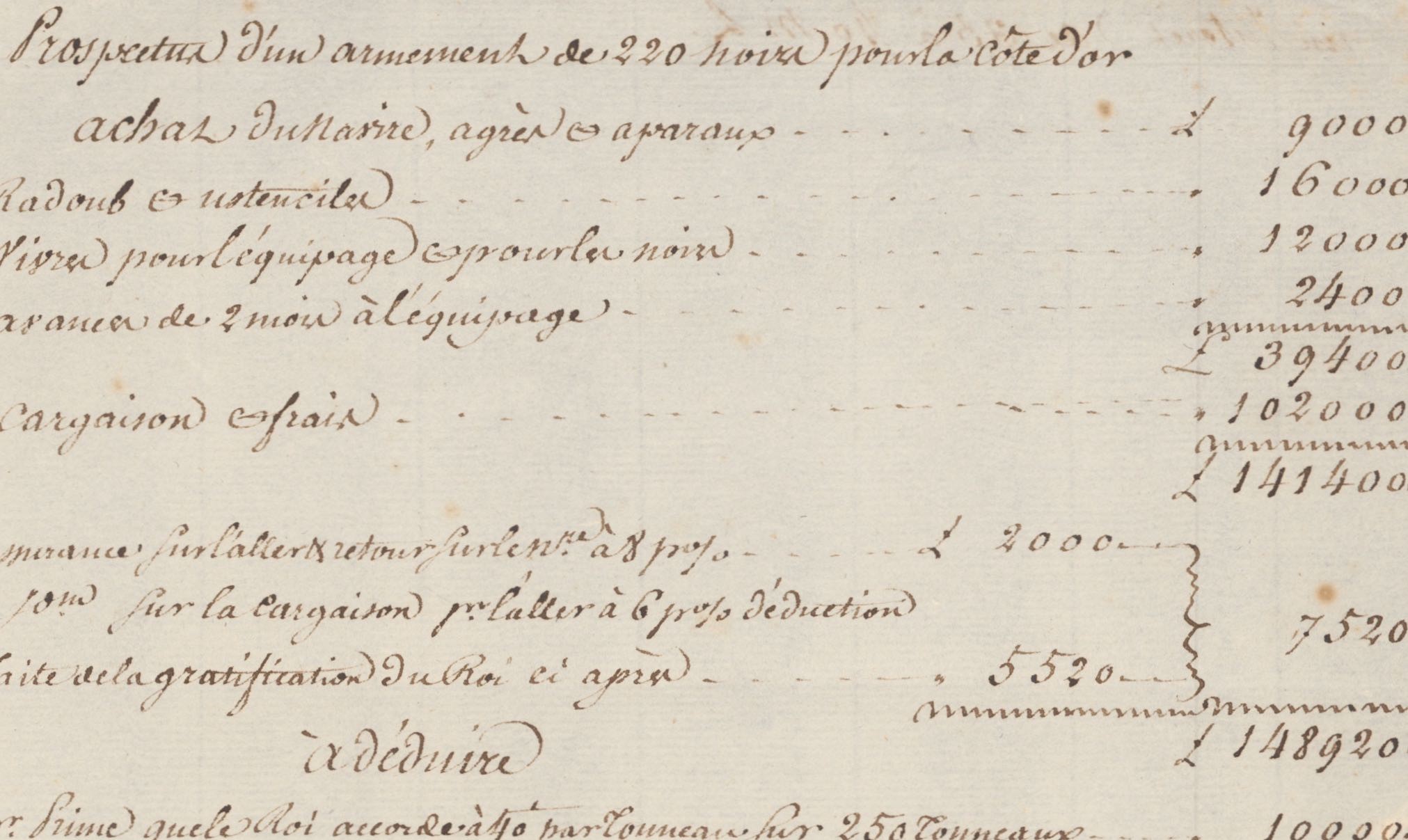
Using individual documents on the fortunes of the slave ship L’intrépide in around 1792, we examine Switzerland’s involvement in colonialism and especially the slave trade.
Keywords
economic history of Switzerland – colonialism – slave trade – 18th-century Swiss history
The “Züri-Putsch” – a dialect word goes round the world
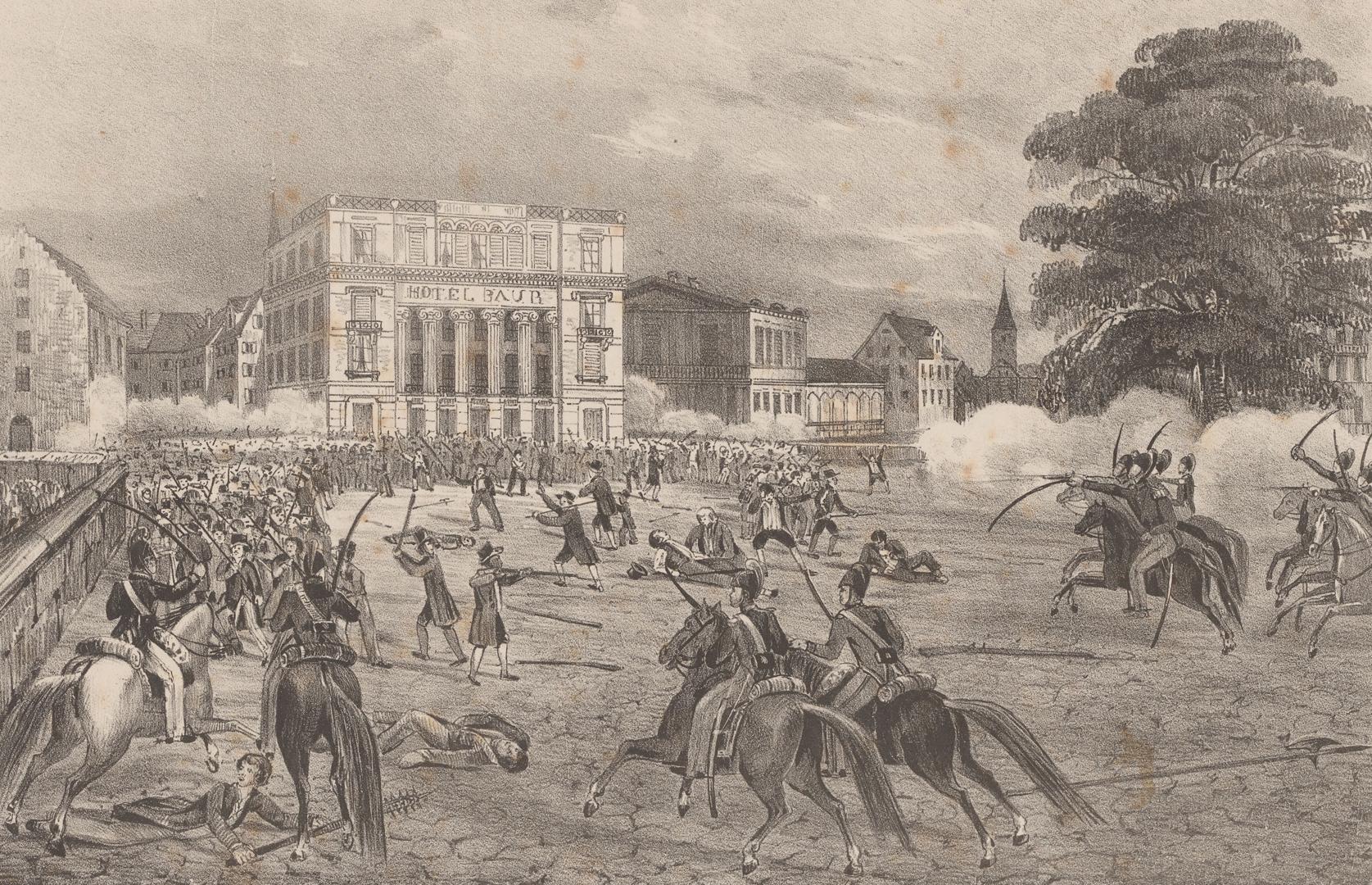
“Putsch” is one of the few Swiss dialect words to have been adopted into other languages. But what was the “Züri-Putsch” of 1839?
Students will develop an understanding of the conflicts associated with the secularisation of education in Zurich, and learn to interpret political caricatures.
Keywords
Regeneration (1830/31–1848) – Züri-Putsch – Straussenhandel – education – separation of Church and State – David Friedrich Strauss (1808–1874) – Bernhard Hirzel (1807–1847) – conceptual history – political caricature
School in the old days – teaching in Zurich 200 years ago
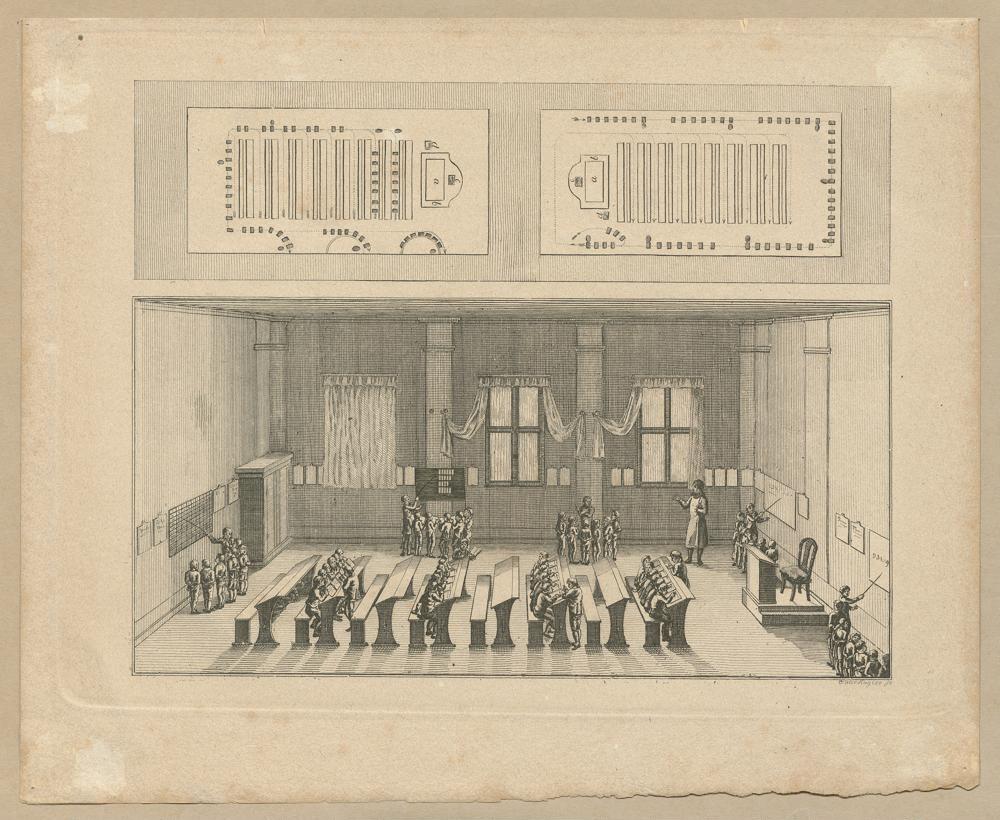
200 years ago, the situation in Zurich’s primary and secondary schools was not especially regulated. Teaching mostly revolved around spelling or dictation. The methods of Pestalozzi, which were very progressive for the time, were taught only in a very few institutions, such as the City of Zurich’s charity school. Gottfried Keller describes this teaching from his own experience in his “Grüner Heinrich”.
Students will gain an insight into the development and history of schooling in the 19th century.
Keywords
school – script – educational theory – Gottfried Keller – writing test – Kurrent script
An 18th-century natural disaster: the Küsnacht floods of 1778
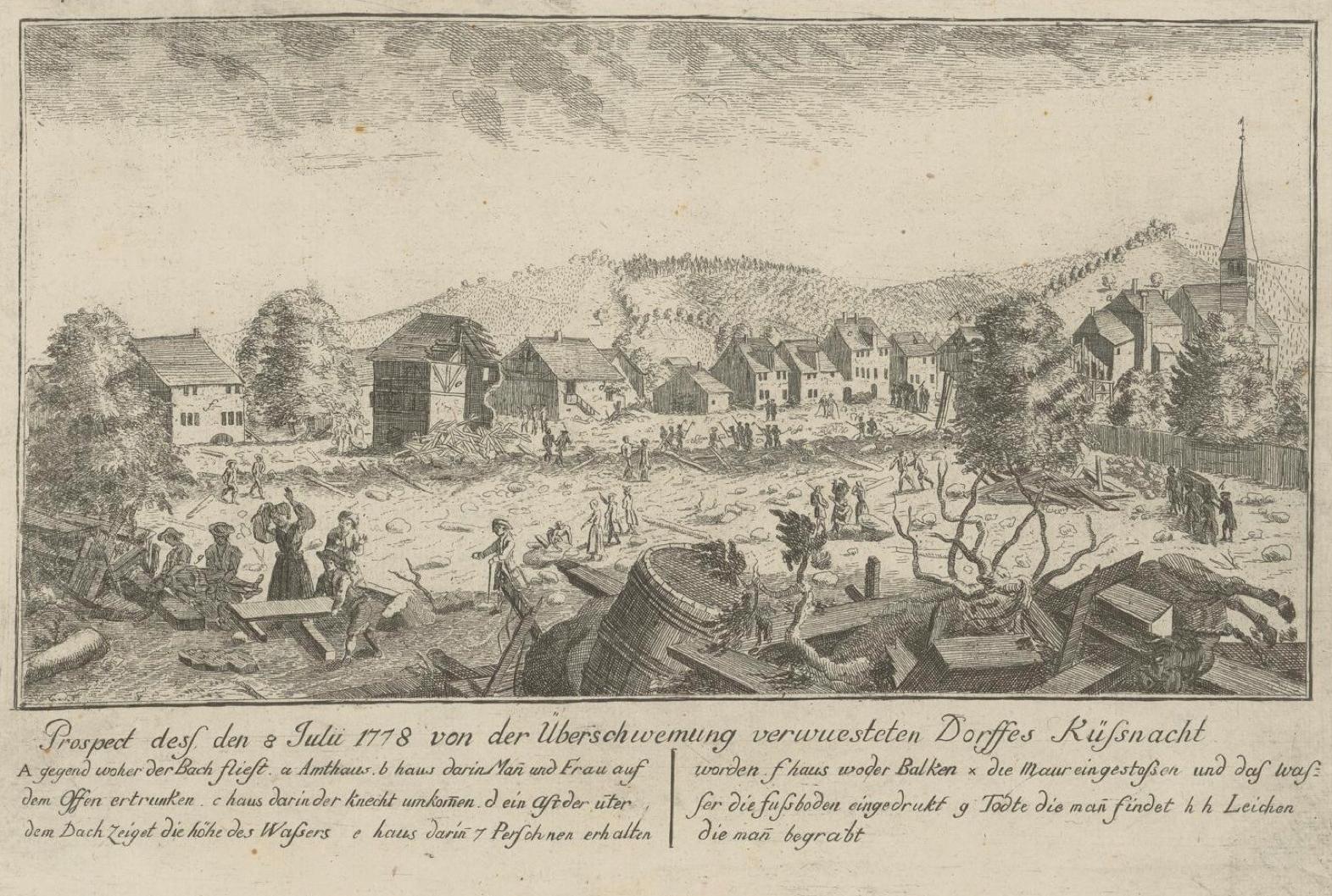
On 8 July 1778, a devastating storm struck Küsnacht on Lake Zurich, sending huge quantities of water rushing down the hillside behind the village. The village centre was flooded and almost completely destroyed.
A witness to the events, Johann Hegi, created two graphic works capturing the vision of destruction that presented itself to him.
We trace the growing awareness of the needs of active environmental protection through historical documents which we learn to interpret and reconstruct as relevant. Students also explore typical documents to expand their understanding of local and agricultural knowledge.
Keywords
natural disaster – flood protection and disaster prevention yesterday and today – Küsnacht – Dorfbach / Wildbach streams
The youthful Gottfried Keller explores the woods
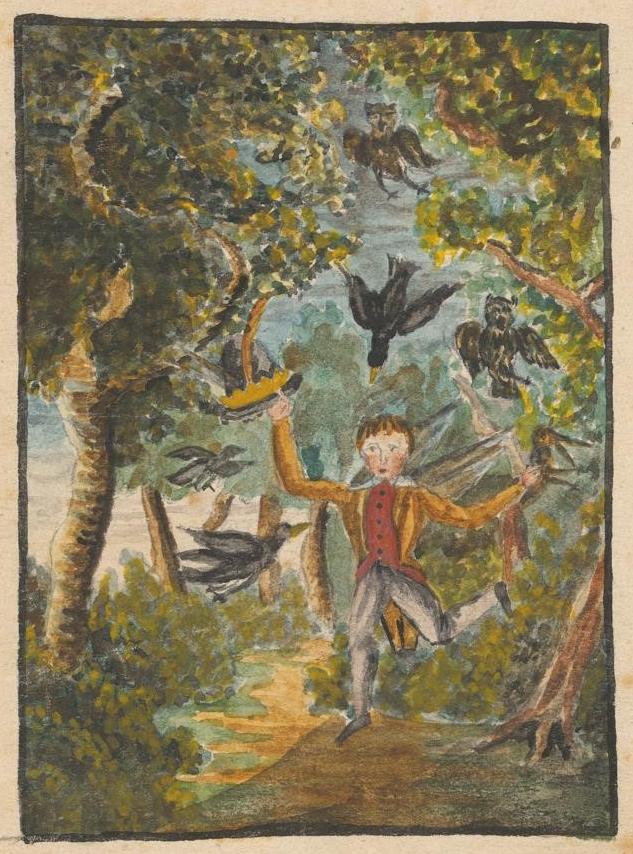
How did a young person 200 years ago experience nature? Images and texts by the young Gottfried Keller teach students about responses to nature in the 19th century. In those documents, they also encounter forms of independently produced work from those days.
In his later prose, the 19th-century writer also shows himself to be a pioneer of nature protection. Yet that development begins with the youngster’s idyllically Romantic sensitivity to the phenomena of nature.
Keywords
nature observation 200 years ago – literature – visual arts – Gottfried Keller – from Romanticism to Realism
Girls’ education in 18th- and 19th-century Zurich
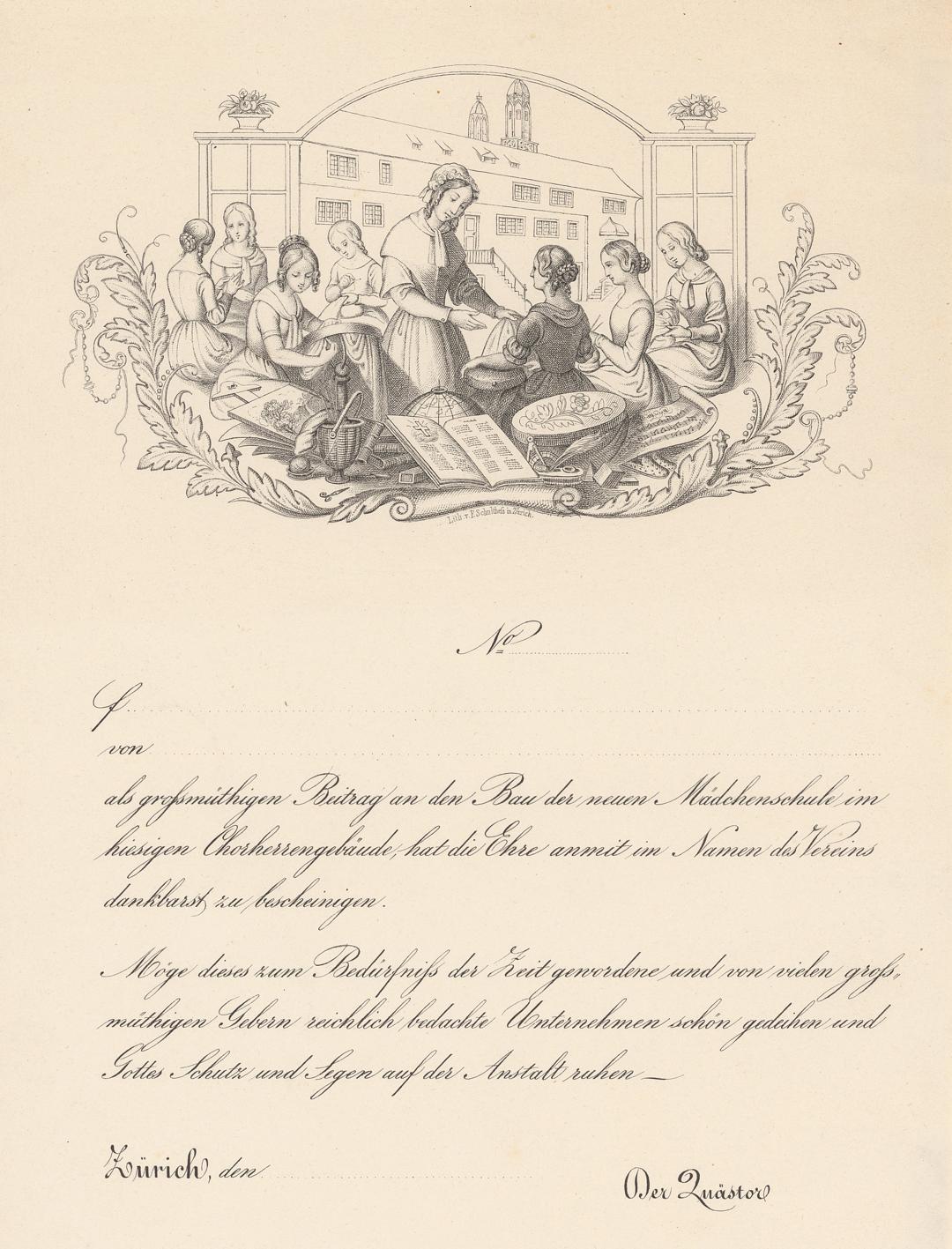
Today, we take it for granted that girls as well as boys can attend school or study at university. Yet 150 years ago, things were very different. In 1864 the University of Zurich became the first university in Switzerland to admit women. It was not until some time later that school classes for girls were created.
What educational opportunities did girls and young women have in Zurich before then? We learn more from a printed set of school rules dating from 1794 and a schoolgirl’s letter from 1876.
Keywords
education for girls – school in Zurich in the 18th and 19th centuries – educational theory – letter-writing culture – school rules 200 years ago
Richard Wagner in Zurich: the concerts of 1853
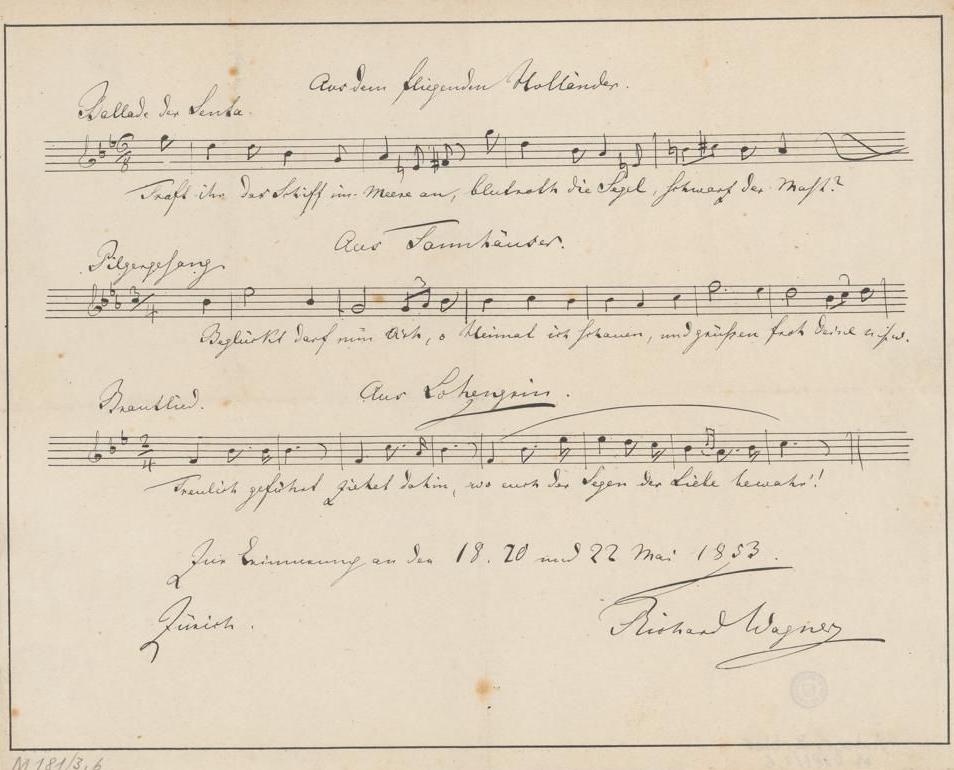
We learn about concert programmes in Zurich in the mid-19th century, in which Richard Wagner (1813–1883) played a central role. He lived in the city between 1849 and 1858. Three works from the core canon of opera history were first presented here. We learn to read and understand manuscripts and acquire skills in contextualising historical documents.
Keywords
music-making in the 19th century – Richard Wagner – concerts – choral music – opera: “The Flying Dutchman” (Senta’s Ballad ) / “Tannhäuser” (Pilgrims’ Chorus) / “Lohengrin” (Bridal Chorus)
School (hi)stories from Zurich – school 250 years ago
1. “Sapere aude”: the motto of the Enlightenment
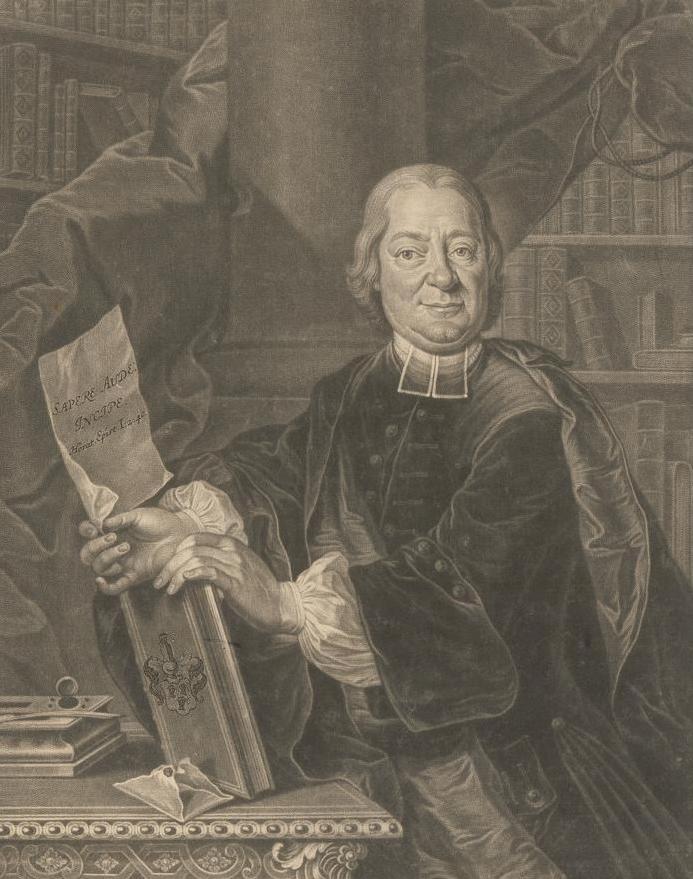
In the 18th century, Latin lessons at Zurich’s Collegium Carolinum accorded great importance to knowledge of the classics. The Enlightenment scholar Johann Jakob Breitinger (1701–1776) was a teacher at the Carolinum. He considered it essential that his pupils should learn to think for themselves, and accordingly Horace’s entreaty “Sapere aude” [“Dare to know!”] was central to his work.
Students will learn more about key aspects of Enlightenment thought from an analysis of Johann Caspar Füssli’s portrait of Breitinger.
Keywords
school – Latin lessons – Age of Enlightenment – Johann Jakob Breitinger – Collegium Carolinum Zurich – philosophy – Friedrich Schiller – Immanuel Kant
2. Sayings to mull and remember: pages from personal albums
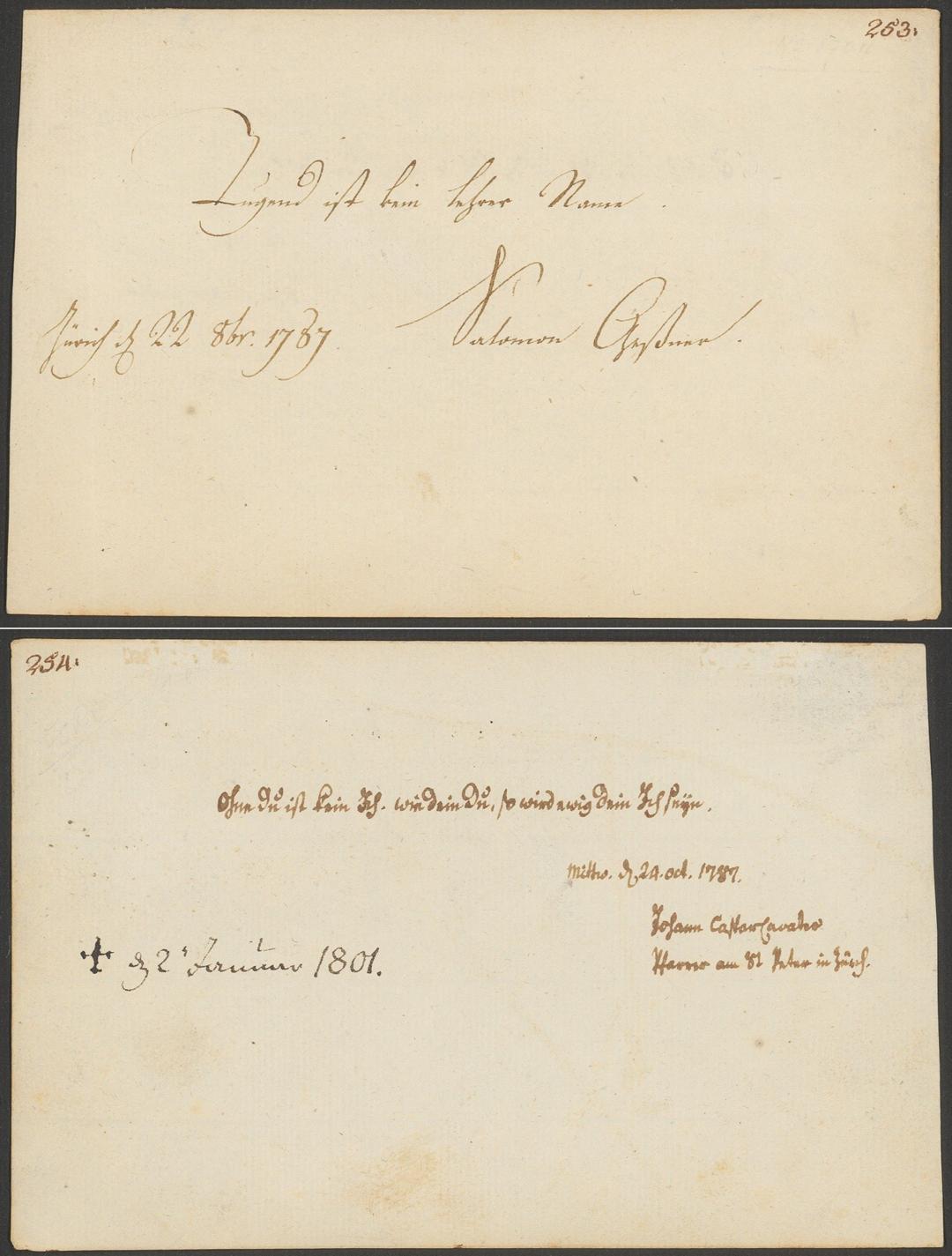
Nowadays, the idea of making an entry in someone’s “personal album” sounds rather old-fashioned, but in the 18th century it was a common and popular practice. Well-read people of the time could recognise the derivation of sayings effortlessly, even if their originator was not named.
We gain an insight into the morality and values of the 18th century, as well as learning to read handwritten documents and see them in their historical context.
Keywords
school – learning and studying in the 18th century – era: Enlightenment – Salomon Gessner – Johann Caspar Lavater – personal album / album amicorum / poetry album – sayings/aphorisms
